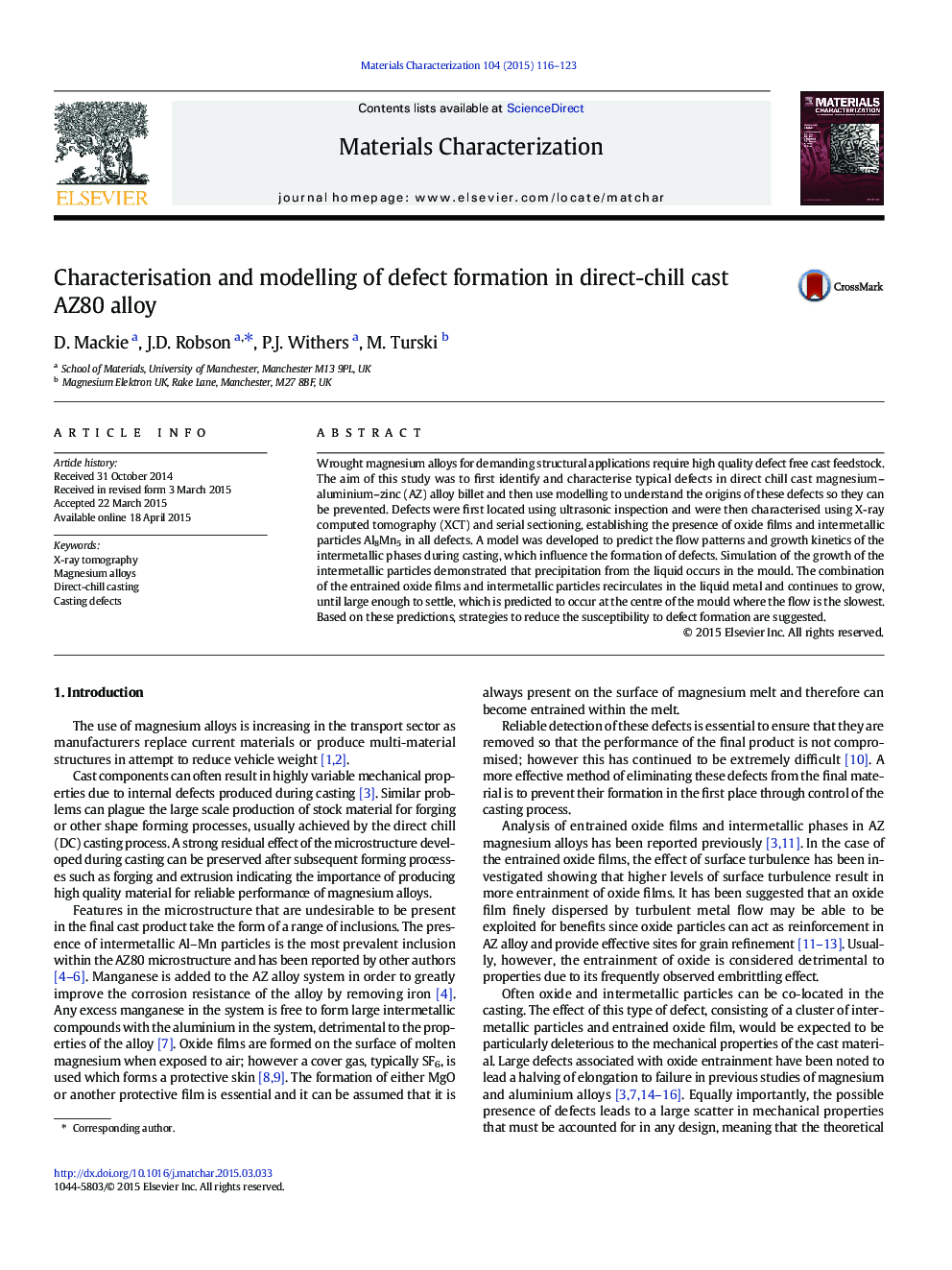| Article ID | Journal | Published Year | Pages | File Type |
|---|---|---|---|---|
| 1570908 | Materials Characterization | 2015 | 8 Pages |
•Casting defects in magnesium direct chill casting have been imaged and characterised in 3-dimensions.•The occurrences of co-located clusters of particles and oxide films have been characterised and explained.•A coupled model has been developed to help interpret the observed trend for defects located towards the centre of billets.
Wrought magnesium alloys for demanding structural applications require high quality defect free cast feedstock. The aim of this study was to first identify and characterise typical defects in direct chill cast magnesium–aluminium–zinc (AZ) alloy billet and then use modelling to understand the origins of these defects so they can be prevented. Defects were first located using ultrasonic inspection and were then characterised using X-ray computed tomography (XCT) and serial sectioning, establishing the presence of oxide films and intermetallic particles Al8Mn5 in all defects. A model was developed to predict the flow patterns and growth kinetics of the intermetallic phases during casting, which influence the formation of defects. Simulation of the growth of the intermetallic particles demonstrated that precipitation from the liquid occurs in the mould. The combination of the entrained oxide films and intermetallic particles recirculates in the liquid metal and continues to grow, until large enough to settle, which is predicted to occur at the centre of the mould where the flow is the slowest. Based on these predictions, strategies to reduce the susceptibility to defect formation are suggested.
